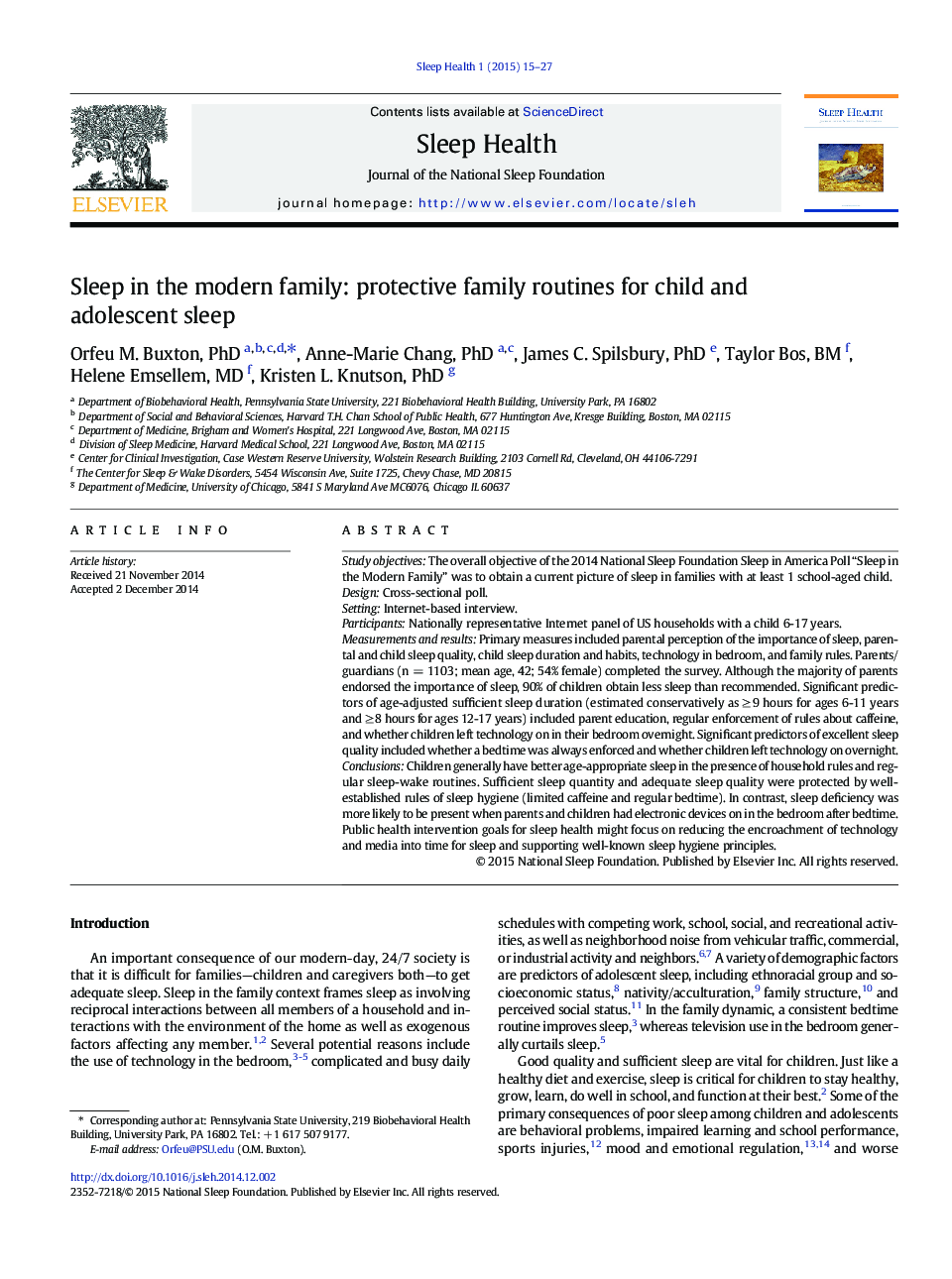| Article ID | Journal | Published Year | Pages | File Type |
|---|---|---|---|---|
| 916320 | Sleep Health | 2015 | 13 Pages |
Study objectivesThe overall objective of the 2014 National Sleep Foundation Sleep in America Poll “Sleep in the Modern Family” was to obtain a current picture of sleep in families with at least 1 school-aged child.DesignCross-sectional poll.SettingInternet-based interview.ParticipantsNationally representative Internet panel of US households with a child 6-17 years.Measurements and resultsPrimary measures included parental perception of the importance of sleep, parental and child sleep quality, child sleep duration and habits, technology in bedroom, and family rules. Parents/guardians (n = 1103; mean age, 42; 54% female) completed the survey. Although the majority of parents endorsed the importance of sleep, 90% of children obtain less sleep than recommended. Significant predictors of age-adjusted sufficient sleep duration (estimated conservatively as ≥ 9 hours for ages 6-11 years and ≥ 8 hours for ages 12-17 years) included parent education, regular enforcement of rules about caffeine, and whether children left technology on in their bedroom overnight. Significant predictors of excellent sleep quality included whether a bedtime was always enforced and whether children left technology on overnight.ConclusionsChildren generally have better age-appropriate sleep in the presence of household rules and regular sleep-wake routines. Sufficient sleep quantity and adequate sleep quality were protected by well-established rules of sleep hygiene (limited caffeine and regular bedtime). In contrast, sleep deficiency was more likely to be present when parents and children had electronic devices on in the bedroom after bedtime. Public health intervention goals for sleep health might focus on reducing the encroachment of technology and media into time for sleep and supporting well-known sleep hygiene principles.
